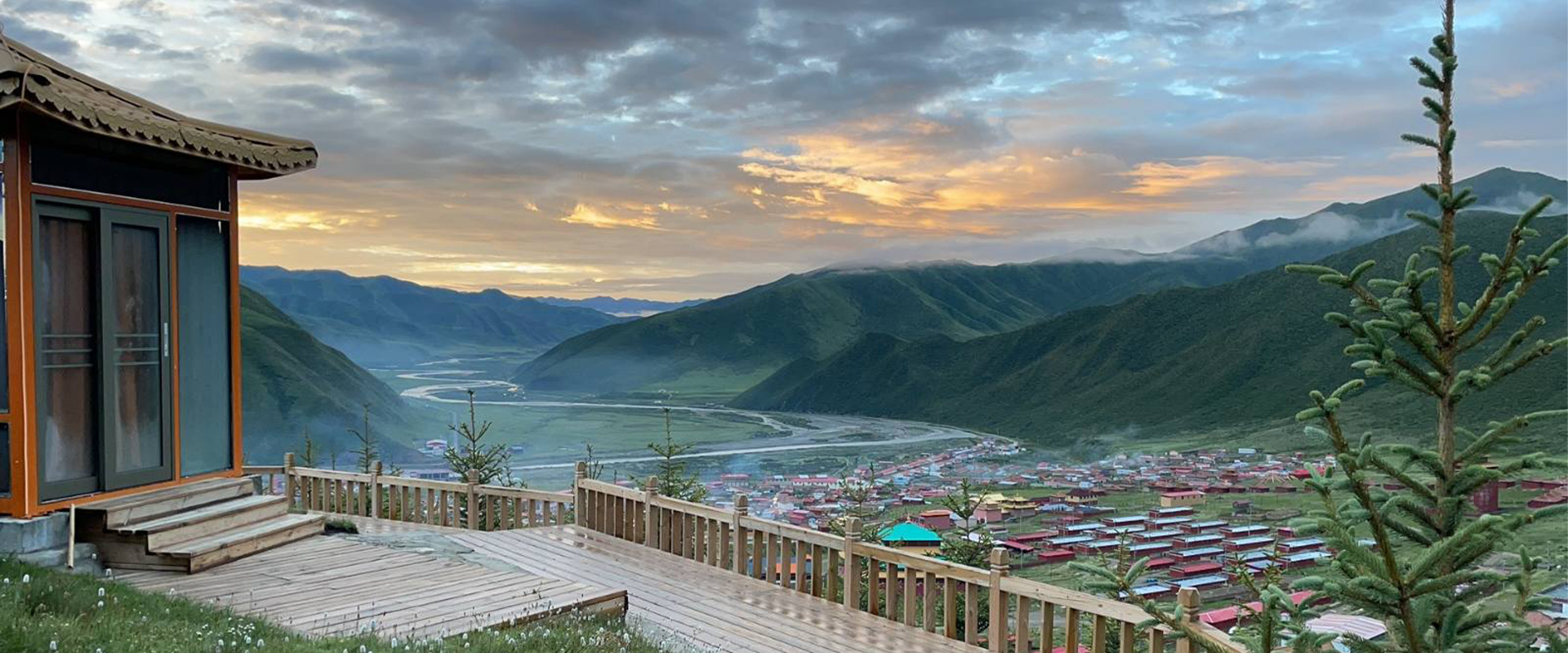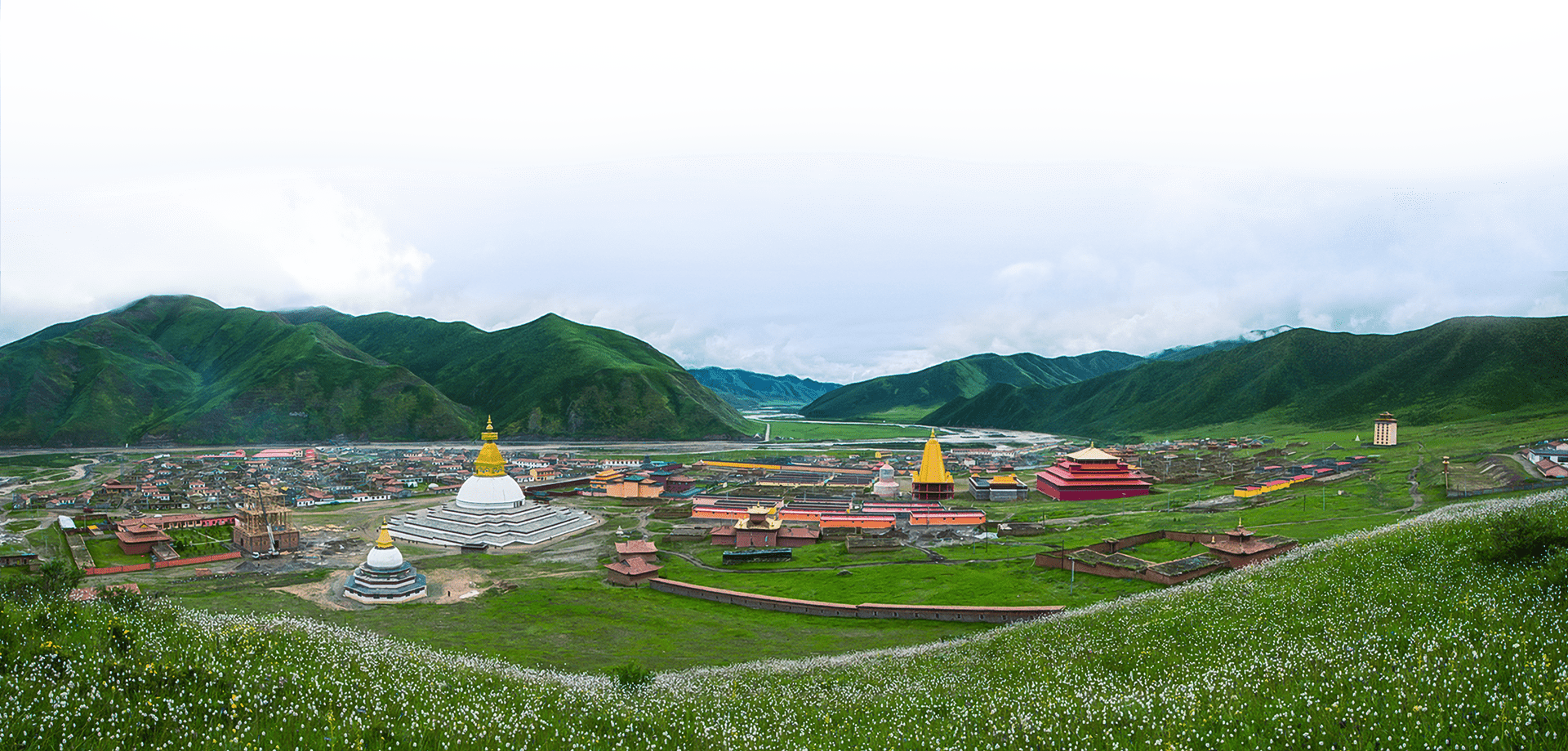Teaching on October 14.10.2023
Part 1 [1]
So how to start Dharma practice and why practice Dharma is the question? What kind of conditions one [need to have] to practice Dharma [well]? Well, these questions are pretty important for the people who want to practice Dharma.
A very common condition to practice Dharma well is to understand the nature of Samsara and Nirvana – [to have] renunciation. So, to practice renunciation is the first condition for us to practice Dharma well.
Yesterday I described the qualities, the unique part of Tantrayana and its nature. Tantrayana, the practice of Tantrayana is based on the Sutrayanas, on renunciation.
Without strong pure renunciation, it is difficult to practice both Sutrayana and Tantrayana. So, renunciation is to fully understand what is Samsara and its causes. Sometimes the nature of renunciation it described a little differently in the Sutrayana and Tantrayana.
In the Sutrayana, mostly it is said Samsara is full of suffering, because of the causes of bad actions and mental kleshas. In the Tantrayana, sometimes it says to understand the nature of everything, every phenomenon is like a great Bliss and Mahasukha. The unity of great Bliss and emptiness. So, sometimes it is different. They have different ways to describe the nature of things. The reason is that the main purpose [of practice] is to destroy attachments, grasping by understanding the nature, the reality of phenomena.
These are different ways of how to teach, how to lead the people on the path. We always have good reasons to understand that Samsara is full of suffering – this is a way to eliminate our attachments to this world, to everything in this life. So this is one way. And then when we talk about emptiness, the nature of phenomena is emptiness. Then emptiness means it’s beyond that [the capacity] of regular mind. It’s inconceivable. So, therefore, to understand, to realize the nature of phenomena, the great wisdom is also not belonging to the ordinary minds. So, our regular mind cannot really realize this great nature.
So, I think we can divide it into three things to understand the nature of phenomena: the outer nature, the inner nature, and the secret nature of phenomena. And the outer nature of, for example, Samsara is suffering, and the renunciation taught in the Hinayana and Mahayana teachings – Sutrayana recognizes the outer nature of Samsara well.
And then Mahayana teachings, like the Second Turning of Dharma Wheel, the Great Mother Wisdom, Paramita teach us how to recognize the inner nature of phenomena, which is emptiness; and then Tantrayana teaches the realization of the secret, the great secret nature of phenomena, which is more like awareness, a unity of awareness and emptiness.
When we say emptiness, and we most times we don’t see the difference between nothingness and emptiness; in fact they are very different, not the same. But emptiness is also reality. Nothingness is not a reality for anything. So, therefore, it is different.
So, I think the renunciation, there are different levels of renunciation. The renunciation taught in the Tantrayana teachings is more like a realization of the nature, the secret nature of phenomena. Because that realization or that renunciation has the nature to eliminate all the thoughts, all the emotions in our minds. The main goal for Dharma teachings is to teach us how to practice the path, how to achieve liberation.
From the viewpoint of the Buddhist teachings, especially Mahayana teachings and Tantrayana teachings, every single thought can be a troublemake because when you think of something then it arises, it creates more thoughts and more vicious [thpughts] and more fears. So, therefore, having a thought is not balanced. There’s no balance. It’s always this or that, and always good and bad and always happy and unhappy, something like that. So there’s no equalimity in that kind of state.
So Buddhist teachings, especially profound teachings, heart teachings, teach people how to be in a nature that is free from all thoughts so that there is no attachment, nothing, no attachment, not anything that creates imbalance. Our minds are always thinking and always trying to create something. And, so, when it tries to create something, then, of course, it has to face difficulties, always think, always think. And that is sort of tiring when you think. Even though you are thinking emptiness as long as you’re thinking, your brain is working, and it is tiring.
Dharma practice has the power to equalize, to have everything equally peaceful. This is how we achieve great liberation, I think, because liberation is free from all the thoughts, all the things that are unbalanced. Liberation means there’s nothing, but at the same time it’s a great peace. As for us, although we say, “I am thinking nothing,” – “nothing” means your mind becomes more like blank – like sleep. It is not awareness or emptiness. As well as aweraness is concerned, there is no attachment, no thoughts, no grasping but very peaceful. This is the nature of liberation. So, to practice the profound meaning of Dharma teachings, I always say we have to have a good foundation to realize the nature, to have a pure, profound realization.
So that’s why the great masters, especially in Tibetan Buddhism, teach, for example, ngondro preliminary practices. And they teach us to see the importance and the necessity of these preliminary practices. All Tibetan Buddhist traditions have the preliminary practices. Each tradition has its own preliminary practices, but the meaning is the same. The meaning is about the four dharmas that turn the minds into real Dharma. The essence of the practices are called differently. For example, in the Nyingma tradition, the essence of the Dharma practice is called Dzopa Chenpo, the Great Perfection. And for Kagyupa is Mahamudra; and they have different titles of saying the name of their tradition’s Dharma practices.
As for the way Tibetan people practice Dharma – the monks and the nuns in Tibet follow a very good system. They study for many, many years, at least 20 to 25 years to graduate from the Dharma school, to become a Geshe or Khenpo or whatever. After that, most people go to meditation centers to study Tantrayana specifically and to receive training directly, getting the instructions from the Guru directly. And under the guidance of the Guru, they try to practice every day for three years, for four years. In our monastery, we have a four-year program to finish the practices of Dzopa Chenpo.
The tradition of Dharma schools in Tibet comes from Nalanda in India. We try to follow this tradition and to keep the tradition of Nalanda, and to practice or to study the way the masters in Nalanda did. That was Nalanda, I think everyone knows, or at least heard about this. It’s no more there, we only see some remains of the constructions. But that was the biggest university at that time in Asia. And the panditas, the masters from Nalanda are very important people to spread, to keep the lineage, the teachings of Buddha Shakyamuni. For example, we call eight very famous and important masters from Nalanda the Six Ornaments and two Supreme monks – Nagarjuna and Aryadeva, Asanga, and so on. They are the masters from Nalanda. And because of their wisdom, their activities, and their hard works, we are still able to meet, the study, the teachings of Buddha Shakyamuni on this earth.
And then Tantrayana was also taught in India. Some tantras were taught by Buddha himself, and some … he transformed into different deities and taught different Tantras. The eighty very famous Mahasiddhas from India accomplished their achievements on the path through the practice of secret Tantrayana. So, Tantrayana or secret Vajrayana was established in India and was also very popular. The history of the old translation tradition of Nyingmapa in Tibet was also established in India before it was established in Tibet. The first master, the lineage holder of the Dzopa Chenpo, was Garab Dorje. And Garab Dorje, Jampal Shenyen, Sri Singha, Jnanasutra, Vimalamitra. All of these were Indian masters who practiced Dzopa Chenpo, who accomplished great enlightenment through the practice of the Great Perfection, Dzopa Chenpo tradition.
During the time of King Trisong Detsen, he invited Guru Rinpoche and many other scholars, more than 108 scholars from India to Tibet to spread Buddhism there and to translate all the texts, all the sutras and all the Tantras that existed at that time in India into Tibetan language. During that time, Guru Rinpoche and Vimalamitra also taught Dzogchen teachings to very close, very important students like Vairotsana and Yeshe Tsoyal and many others. Guru Rinpoche had 25 disciples, masters, mahasiddhas as disciples through the practice of Tantrayana.
Then one of the very important reincarnations of Guru Rinpoche, also one of the great treasure revealers in Tibet, Longchenpa, established the tradition of Dzopa Chenpo in Tibet. This is the lineage, the tradition that we follow, we practice, we study. As for the Dharma lineage we practice, it is very important to have a pure and unbroken lineage, because only in that way Buddha’s teachings are [preserved] pure and powerful.
End of part 1 of teaching on 14.10.23
Transcribed by Rigzin Tara & Dieu Hue. Rewritten by: Lotsawa.
Excerpt from MP 3 Hungkar Dorje Rinpoche teaching on 14.10.23.
__________________
[1] This is Hungkar Dorje Rinpoche’s teaching on October 14, in Vietnam.









